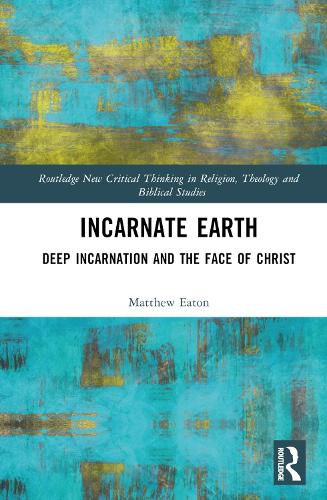Readings Newsletter
Become a Readings Member to make your shopping experience even easier.
Sign in or sign up for free!
You’re not far away from qualifying for FREE standard shipping within Australia
You’ve qualified for FREE standard shipping within Australia
The cart is loading…






Incarnate Earth reimagines the doctrine of Incarnation by extending the unity between Creator and creation beyond Jesus to the entire world. In dialogue with contemporary theologies of deep incarnation and the philosophy of Emmanuel Levinas, the author argues that the face of Christ is encountered in the cruciform demand for justice embodied in the creaturely finitude and vulnerability that grounds ethics. Central to this vision is a recognition that the religious role-functions at the heart of Jesus’ life-the revelation of God and the redemption of the world-are performed throughout the physical world, irreducible to humanity or one heroic representative of the species. Thus, the human encounters the divine Christ in and as the face of any vulnerable thing-animal, vegetal, elemental, or otherwise-not as a transcendent being mediated through humanity. The radical nature of this reimagination necessitates renewed discussions of ecological and animal ethics, calling for compassionate care for all vulnerable bodies insofar as this is possible. It will be of interest to scholars of Christian theology and the philosophy of religion, particularly those focused on ecotheology, religious naturalism and environmental ethics.
$9.00 standard shipping within Australia
FREE standard shipping within Australia for orders over $100.00
Express & International shipping calculated at checkout
Incarnate Earth reimagines the doctrine of Incarnation by extending the unity between Creator and creation beyond Jesus to the entire world. In dialogue with contemporary theologies of deep incarnation and the philosophy of Emmanuel Levinas, the author argues that the face of Christ is encountered in the cruciform demand for justice embodied in the creaturely finitude and vulnerability that grounds ethics. Central to this vision is a recognition that the religious role-functions at the heart of Jesus’ life-the revelation of God and the redemption of the world-are performed throughout the physical world, irreducible to humanity or one heroic representative of the species. Thus, the human encounters the divine Christ in and as the face of any vulnerable thing-animal, vegetal, elemental, or otherwise-not as a transcendent being mediated through humanity. The radical nature of this reimagination necessitates renewed discussions of ecological and animal ethics, calling for compassionate care for all vulnerable bodies insofar as this is possible. It will be of interest to scholars of Christian theology and the philosophy of religion, particularly those focused on ecotheology, religious naturalism and environmental ethics.